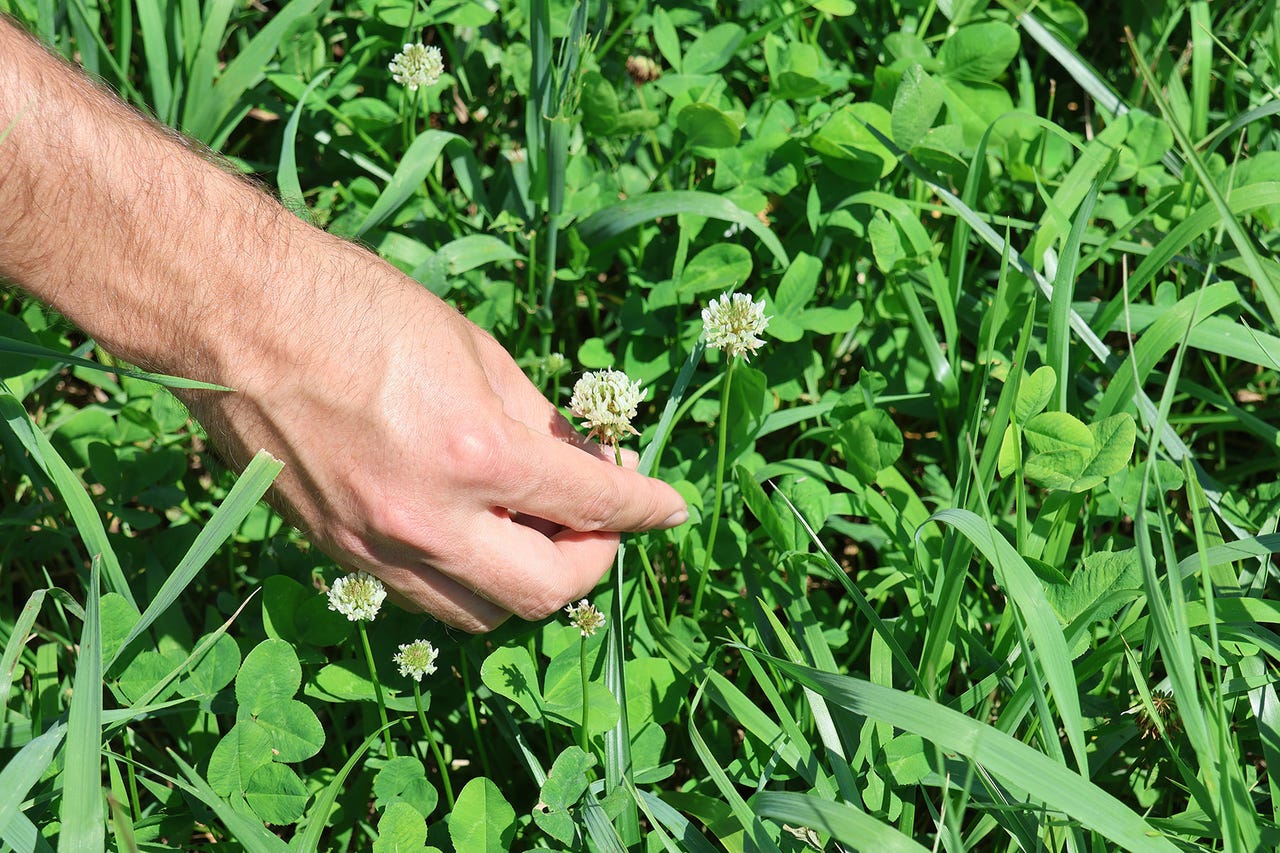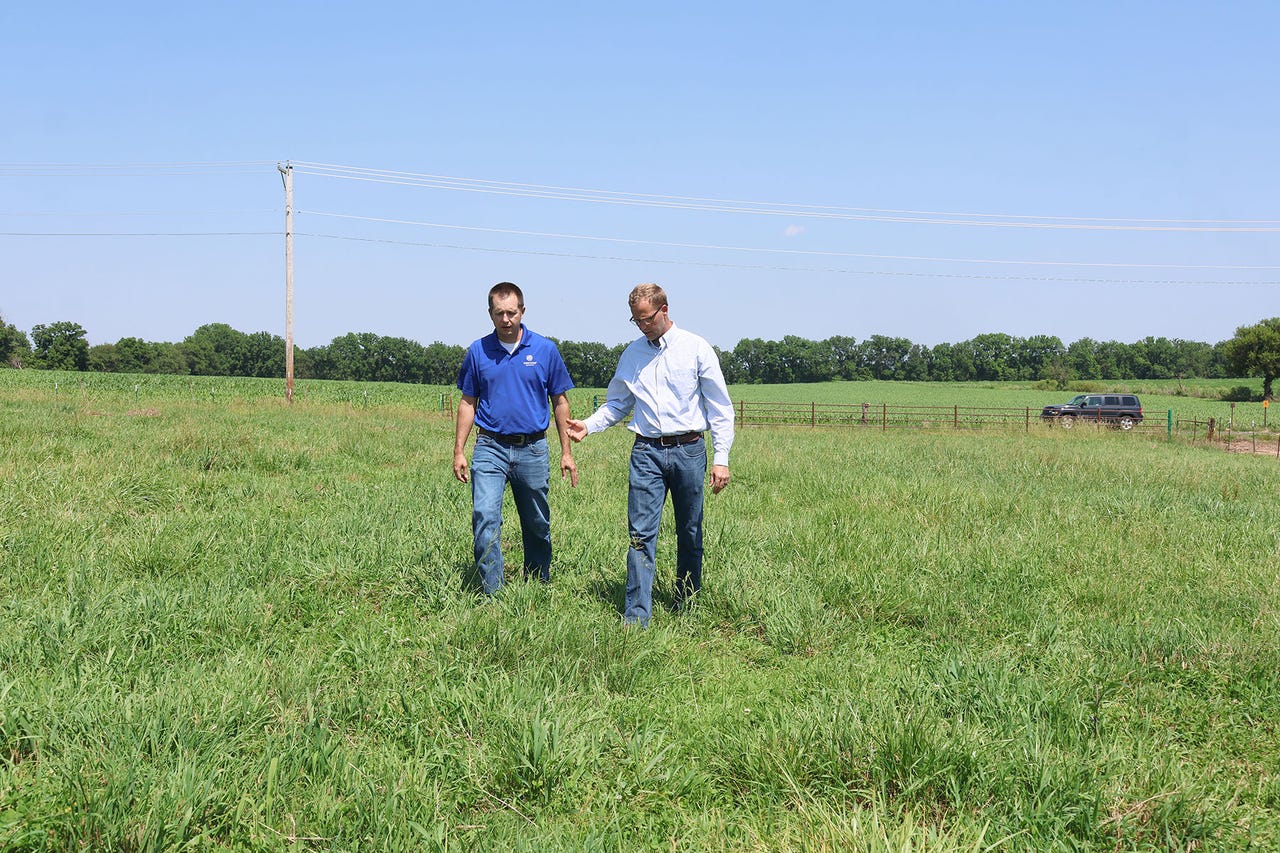Florets of white peeking through the green grass in early summer is unusual in many pastures, but it’s a welcome sight for Missouri farmer Jerry Staiger.
“The age-old problem has been, I want to keep my clover, but I have a complete, absolute weedy mess,” says Staiger, who farms along with owning Earlybird Feed and Fertilizer. “Every day in the spring, it’s the same question from farmers: ‘I’ve got this clover. What can you do for me?’ And the answer has always been, ‘I can’t do anything for you.’”
For decades, dairy and beef cattle producers faced a choice: either tolerate weeds that reduce forage quality or spray herbicides that kill valuable white clover along with the weeds. But Staiger says his family’s experience with NovaGraz is changing that equation by controlling weeds while preserving white clover stands in pastures.
On-farm trial
Staiger, whose family has operated a dairy since 1925 in southwest Missouri, participated in early use of the Corteva product after his father saw a message placed on the family business board that read: “kill weeds, not your clover.”
“They don’t call it the Show-Me State for nothing,” says Brant Mettler, territory manager for the pasture and land management business at Corteva Agriscience. “I think everybody wants to try it and have a neighbor that tries it for them.”
When applied, the herbicide causes temporary stress to white clover plants, which initially concerned Staiger. “Your first take on that clover is going to be, ‘I really damaged my clover.’ It twists and curls,” he explains. “It lays over just like the weeds do.”
However, unlike weeds, the white clover recovers within 14 to 21 days. “It goes from, ‘It’s sick, I’m worried about it’ to ‘I get busy doing other stuff,’ and I come back and, wow, the clover actually bounced back up again,” Staiger adds.
The product works, he explains, because white clover is designed so that it can metabolize the herbicide faster, so it doesn’t bring it to death.

SWEET SPOT: Patches of white clover thrive among the grasses. The nitrogen-fixing plant helps farmers combat invasive weeds, but it’s been a struggle to keep them in the field while killing broadleaf weeds. NovaGraz offers one southwest Missouri farmer a solution to improve pastures for his dairy operation.
Save white clover to improve pasture mix
For Mettler. safeguarding white clover adds quality to a forage field.
“If you want a monoculture, we can use herbicides to kill all the broadleaves,” he notes. “But we wanted the diverse spectrum of species to graze into.”
For livestock producers, maintaining white clover in pastures offers multiple benefits:
- dilutes the effects of toxic fescue fungus
- provides natural nitrogen when plants die
- improves overall forage quality
The return on investment comes from eliminating competition from weeds that rob nutrients, water and sunlight.
“Most farmers already know that cattle don’t eat the weeds,” Staiger explains. “If weeds are present, I have fed them with the fertilizer, they take the water, they compete. If I’m doing that, I don’t get the pounds of gain because my field is less productive. I need to control my weeds.”

LONG GAME: Jerry Staiger and Brant Mettler walk through Staiger’s dairy farm pasture in early June, evaluating the health and density of white clover stands that provide essential nutrition for his herd.
Find ROI for cattle
Currently, cattle producers are finding profitability and pasture management are critical.
“Cattle prices are actually really good right now, better for the beef cattle guys, specifically, than they have been ever,” Mettler says. “I really think it’s smart to invest money into becoming more efficient in their pasture, and forage is where it all starts.”
Mettler says some cattle producers worry that keeping too much clover can bring about bloat in animals.
“Clover can, if that’s all they eat,” Staiger explains. “But when it’s intertwined with your grasses, your opportunity for them to only pick that is reduced.”
For dairy producers such as Staiger, whose family practices rotational grazing with their Holstein herd just outside of Billings, maintaining diverse pastures with 20% to 40% clover content is ideal.
NovaGraz works best in early spring. While there are grazing restrictions immediately after application, there are no long-term residual concerns that would prevent reseeding or spreading manure.
As adoption increases, companies and producers are also exploring improved white clover varieties with higher protein content and larger leaves to improve overall forage content.
Staiger says NovaGraz opens new possibilities for pasture management for anyone.
“Several of my largest customers came to us field by field and said, ‘I want some clover in here. I want to graze this differently. This one’s been a weed problem,’” he adds. “We can help now. It’s really neat to see an explosion of farmers interested in saving white clover because of this tool.”